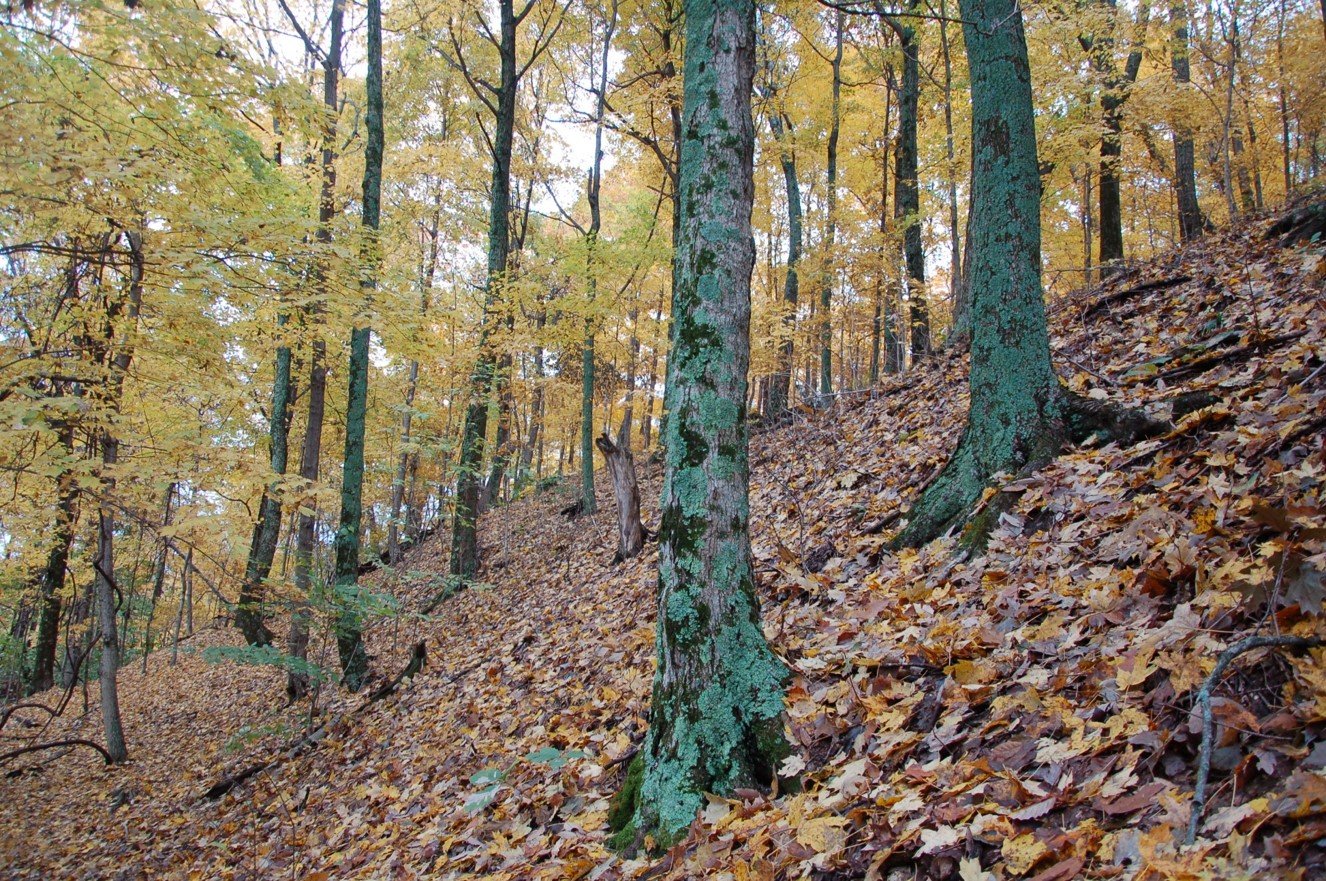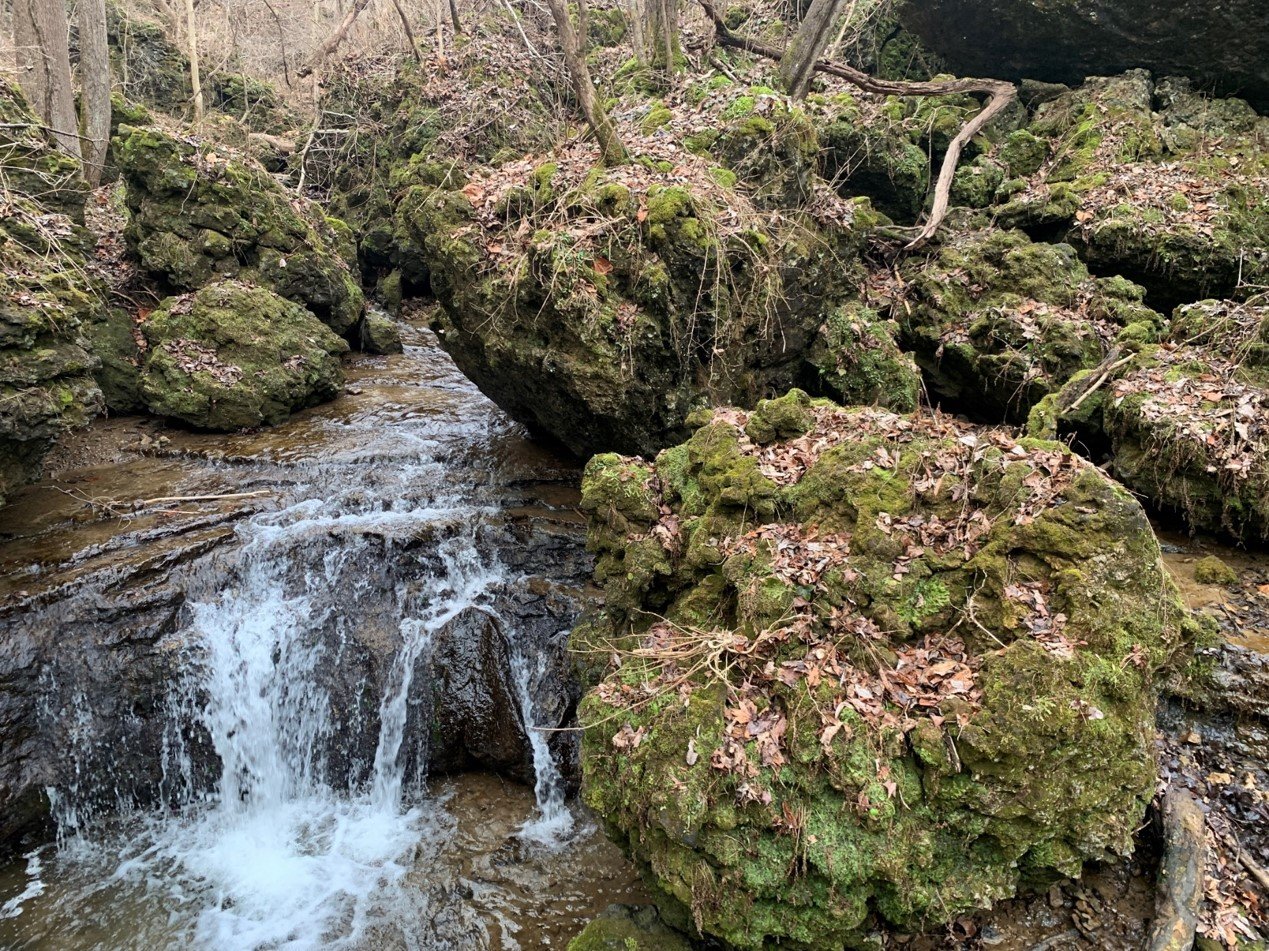Pickett Run Wetlands & Woods at the Sanctuary
28 acres in Highland County
Total Project Cost: $331,097
Balance to Raise: $21,661
Stewardship Funds critically needed
The acquisition of Pickett Run Wetlands and the nearby Pickett Run Woods parcel are helping to fill in two more pieces of the Highlands Nature Sanctuary “preservation puzzle,” bringing the Arc one step closer to connecting Sanctuary East with Sanctuary West. Both of these properties lie in the “middle grounds”, of larger Sanctuary region, as shown in the map below. Pickett Run’s sizeable wetlands are fed by coldwater alkaline springs that border Pickett Run just before it finds its confluence with the Rocky Fork Creek. The parcel includes a long stretch of corridor on Rocky Fork Creek.
Skunk cabbage thrives in the preserve’s cool, water-saturated soils, as does the largest colony of marsh marigolds to be found in the Highlands Nature Sanctuary. Other interesting plants inhabiting the wetlands include swamp goldenrod, blue lobelia, and the rare Riddell’s goldenrod. The Pickett Run tract lies next to the Sanctuary’s largest contiguous forest block - referred to as “Sad Song,” in a region that borders the property to the southeast. Pickett Run Woods’ forest is young but recovering well from the last timber harvest that took place around 25 years ago. The property shelters a fern-rich ravine, and has several large hickory trees as well as beech, red maple, red oaks, and white oaks. A residence on the property was abandoned several years ago, and the deteriorating structure is slated for removal.
In addition to funding that is anticipated from Ohio EPA’s Water Resource Restoration Sponsor Program (WRRSP), the Arc has been awarded a grant from Clean Ohio, which will support the property’s cleanup, as well as trail building in the protected Sad Song region (a first!). Scroll below the photo gallery for deeper information. Photo left: Skunk cabbage in bloom at Pickett Run Wetlands. Photo by Tim Pohlar.











Protecting Pickett Run Wetlands’ rich water resources. Pickett Run Wetlands protects the final length of Pickett Run before it drains into Rocky Fork Creek, as well as both sides of the stretch of the Rocky Fork corridor that lies on the parcel downstream of its confluence with Pickett Run. Its acquisition provides the opportunity for the Rocky Fork Watershed’s continued defragmentation and improved water quality protection.
Protecting and restoring a rare wetlands. Pickett Run Wetlands protects 2.98 acres of wetland habitat (a habitat that is quite limited and uncommon in this region). Restoration activities planned for the wetland areas include invasive species management, removal of the trash and vacant, dilapidated buildings from the property, earthwork to redirect and retain surface water into wetland areas, and plantings to supplement existing wetland species in the floodplain.
Visitor Services Planned. The Arc intends to install a trailhead parking lot in the footprint of the existing structures at Pickett Run Wetlands, as well as a 2.3-mile-long trail that will take visitors in the Sad Song region of the Highlands Nature Sanctuary, which Clean Ohio helped purchase in 2003 (the Arc’s very first Clean Ohio project!). Sad Song protects the largest contiguous forest block within the Sanctuary, encompassing both the main channel of Sad Song Creek and the two large forested hills that drain into it. Sad Song Creek is a spring-fed cold-water creek that is lined with limestone bluffs and winds around large slump blocks. The creek is bordered with an impressive density of karst-country spring wildflower, mosses, liverworts, ferns, and woodland sedges.

